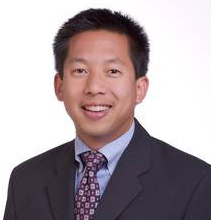By Brian Chou, OD,  FAAO
FAAO
Building a high-revenue practice is no small feat. It requires both reasonable clinical skills and strong business savvy. But even a $1 million-plus practice with a loyal patient base can leave a doctor cold in terms of fulfillment. That doctor may find him or herself wondering about the true meaning of the word “success.”
To be sure, what constitutes “success” varies from one person to another. Generally it has to do with achieving or exceeding one’s goals. The common knee-jerk reflex is to quantify the success of an optometric practice with metrics like annual gross, revenue per patient, number of exams, collections per full-time staff member, frame inventory turnover, and so on. There are excellent resources to help you monitor these metrics including the Management & Business Academy, sponsored by Essilor. ODs can also turn to practice management software to calculate key metrics to benchmark and track them over time.There are also several practice consultancies that promise to show you how to work smarter but not harder–for a fee, of course.
Measuring, comparing and monitoring metrics is important to making a practice profitable, and increasingly so with competitive market dynamics. Profit is not a bad word and is virtuous in the proper context. It permits the practice to provide for the livelihoods of employees, to reinvest in technology and the facility to enhance the patient experience, and to sustain practice operations so patient referrals of friends and family can be accepted.
But what about the elements that bring fulfillment beyond monetary profit?Success as an optometrist represents many deeper and transcendent ideals for me:
• Providing a comfortable, stable and positive environment for employees including a genuine interest in their wellbeing and professional development.
• Consistent, high quality service and products and the creation of an exceptional patient experience.
• Touching the lives of patients, watching children grow into adults, and seeing them bring in their own children as patients.
• Sincerely expressing compassion when the loved ones of patients pass away or patients undergo other difficult life events.
• Implementation of efficient systems that simplify and expedite transactions and allow the practice to thrive even in my absence.
• Becoming the provider of choice in the area because of honesty, integrity and treating others well.
• Charging fairly for products and services so that patients know they can trust us.
• The ability to withstand the betrayal of false friends and business associates while remaining true to my ideals as a practice leader and doctor.
• Generation of reasonable profit without over-coding or resorting to unfair and questionable business practices.
• Teaching another colleague how to avoid my mistakes and helping them to improve their own practices.
• Elevating the stature of optometry in the local community and adding to the fabric of the neighborhood.
It’s easy to get lost in the numbers, but it helps to pick your head up from the spreadsheet, take a look around and consider your greater role as a healthcare provider and member of your community. At the end of the day, it’s your contribution to your patients and community that will matter more than last year’s revenue gains.
How do you measure success as an optometrist? Is it mostly a numbers game to you, or do you strive to see the greater purpose in the work you do every day?
Brian Chou, OD, FAAO, is a partner with EyeLux Optometry in San Diego, Calif. To contact him: chou@refractivesource.com.





















